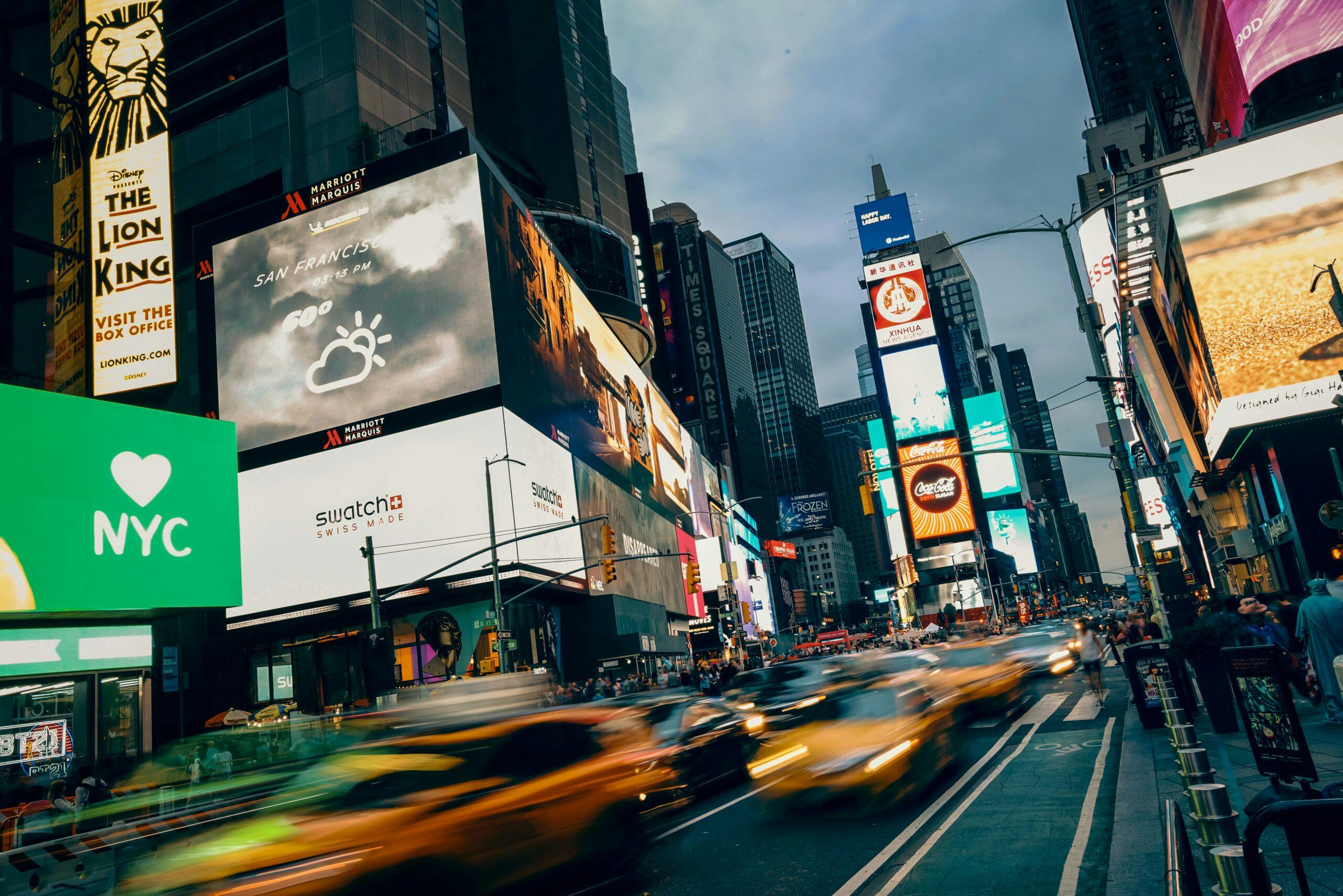ARTICLE
The potential of DOOH adtech on digital vending machines
Imagine you are sitting at a bus stop. All you have is time to wait. A bus, not yours, pulls up in front of you. Across its side is a digital billboard showing a vibrant, intriguing and colorful video advertisement. You’d watch it, right? DOOH (or Digital Out of Home), as you might expect, is any digital media that is communicated outside of consumers’ homes. Whether a consumer is in a waiting room, a train station, or even just walking down the street, these are all great situations to inject a tailored digital advertisement into consumers’ minds.
DOOH vs traditional OOH
DOOH is a burgeoning technology with plenty of growth potential, so here we’ll explore how DOOH, and in particular, smart vending machines, can create an additional revenue stream and give consumers an exceptional experience.
So how does DOOH compare with traditional forms of OOH advertising such as a good old-fashioned billboard?
Well, it has a number of advantages.
Billboards are static, require continual manual updates and are therefore very much “broad brushstrokes” when it comes to audience targeting. This is what makes digital advertising such as programmatic online advertising the preferred choice for many brands: it’s attributable, data-driven, and adaptable. If your digital ad campaign isn’t working, it can be tweaked, but your billboard ad can’t.
That said, OOH does have one brilliant advantage over digital: that it is disruptive. It gets in consumers’ faces and can’t be closed down, blocked, fast-forwarded through or muted. The consumer has no choice but to engage.
What if we told you that DOOH takes the best of both worlds and mashes them together:
With DOOH, brands can tweak their campaigns in real time and empower their performance by adjusting their marketing content and ad spend easily based on where consumers are right now. Campaigns can be updated quickly, ensuring full coverage of the funnel.
Because DOOH technology, such as Invenda’s smart vending machines, is always connected and can be operated remotely, brands can establish consistent messaging and an engaging user experience across all of their branding channels.
It’s for these reasons that DOOH is very much a growing industry. Just like with any digital advertising, brands have the power to quickly update their DOOH ad content according to who is viewing it and where they are viewing it. This cutting-edge marketing technology has the ability to propel businesses into the mainstream.

Where does DOOH make sense?
For DOOH to work effectively, it really needs to be strategic, both in terms of location and targeting.
Location-wise, it needs to be in sites with mass footfall or where people have time to stop and process.
For example, a train station waiting room, with a carousel of passer-by travellers would be a prized position for DOOH media. Other examples include places of mass pedestrianisation such as shopping centres, squares, bus shelters and pavements. There are also ‘sit and dwell’ hot-spots like waiting rooms in salons, doctors, dentists, airport gates, train and coach stations.
For ad targeting, the best-fit places such as hotels and universities are inhabited by clear target groups. Furthermore, some DOOH technology, like Invenda’s smart vending machines, has the capability to selectively display averts to the right potential customers through accurate demographic sensors.
Why do smart vending machines work so well?
Through our proprietary adtech, we’ve found that smart vending machines are a great tool to deliver DOOH media for three reasons:
1. Vending machines are already situated in prime locations for reaching potential consumers who don’t know they need the products inside (until they see them).
2. Vending machines are a tried and tested space for advertising. They are often used to advertise through stickers on the window or delivery draw, and can lead to immediate impulse purchases.
3. Crucially, smart vending machines offer DOOH at the actual point of sale meaning brands no longer have to work hard to nudge potential customers towards committing a purchase as they are already at the end of the funnel. They can build brand awareness and drive action all in one fell swoop.
And the results speak for themselves:
One of our clients advertised a market-leading energy drink and saw a 26% increase in sales during that period.

What to consider when selling DOOH space?
It’s not all plain sailing with DOOH. One challenge versus online is that in some situations, the exact number of impressions may be harder to determine. Thankfully, Invenda technology can generate incredibly useful and accurate viewership analytics such as:
the overall number of people who saw the advertising
the age and gender of the viewers
the exact times when the ads were seen by the most people
Because the Invenda platform can count frequency and capture the demographics of the audience who approach the machine, brands develop a better understanding of the impact their campaigns are having and whether they are reaching the right audience. This kind of information is essential for continual learning and improvement.
Media on DOOH can also be purchased through traditional methods, or through programmatic, supply-side advertising platforms, so as a buyer, you have flexibility and choice as to how you purchase space. A supply-side platform is simply an adtech platform that manages, sells and optimizes ad space.
At Invenda, we manage both traditional ad sales and work with partners to offer programmatic ad sales. This provides additional revenues to your great locations.
And of course, because Invenda’s adtech is built into the point of sale, you get a super clear understanding of your consumers’ buying habits, which gets fed straight back into the targeting mix.
We hope you now have a clearer understanding of DOOH, and the benefits it can bring to your business. If you’d like to speak to us about how we can help you with DOOH at the POS with our smart retail solutions, get in touch today.
